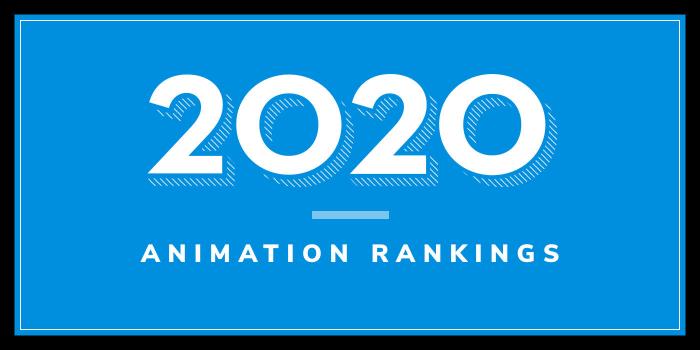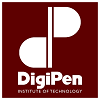

What is the top animation school programs in Washington for 2020?
| Ranking | School | City |
|---|---|---|
| 1 | DigiPen Institute of Technology | Redmond |
| 2 | University of Washington | Seattle |
Our 2020 ranking of the top animation school programs in Washington. For an explanation of the ranking criteria, click here.

Founded in 1988, DigiPen Institute of Technology was the first school in the world to offer a bachelor’s degree in Video Game Development. More than 550 companies have hired DigiPen graduates and the school is located near more than 400 interactive media companies, making the region one of the largest video game centers in the world. The school, which serves around 1,100 students from all 50 states and close to 50 countries, has international campuses in Singapore and Spain along with educational partnerships with Keimyung University in South Korea and Thammasat University in Thailand.
DigiPen offers ten graduate and undergraduate program options in the areas of Art, Design, and Computer Science. Offerings for aspiring animators include a BFA in Digital Art and Animation and an MFA in Digital Arts.
The BFA program is designed to prepare students to create artwork at the professional level. In addition to excellent drawing skills, students will gain production experience, familiarity with modern studio processes, and storytelling abilities. Sample courses for the program include Animation, Human Anatomy, Art and Technology, Storytelling, Storyboards, 2D & 3D Animation, Cinematography, and Conceptual Illustration and Visual Development.
A core component of the BFA curriculum is Multidisciplinary Team Projects, which the school says provides the opportunity for students to “contribute on collaborative endeavors in student games, animated films, and more.” The semester- and year-long projects give students the opportunity to “see a project through from the concept stage to final, polished product.” Potential careers for graduates include Animator, Character Artist, Environmental/Asset Artist, Producer, Simulation and Effects Animator, UI Designer, and many others.
In addition to the Redmond campus, the BFA in Digital Art and Animation is available at the school’s international branch campuses including Digipen Europe-Bilbao and Digipen Singapore.
The MFA is a terminal degree program that allows students to build on their foundation and “expand beyond traditional arts.” Students will hone their craft in digital media and build proficiency in subjects such as digital sculpting, digital painting, character design, and other specializations within the digital media industries.
The MFA culminates with an advanced thesis project that allows students to develop and showcase an original body of work that is both personal and reflective of their strongest capabilities as a digital artist. Graduates of the program are prepared to seek positions in both academia and production. Possible roles include Animator, 3D Modeler, Character Artist, Senior Animator, Senior Character Artist, Texture Artist, and Professor of Fine Arts.
Graduates of the Digital Art Programs at DigiPen have been hired at companies such as Activision, Blizzard Entertainment, Disney Online, Electronic Arts, Microsoft, and more.

Established in 1861, University of Washington (UW) serves more than 57,000 students across three campuses in Seattle, Bothell, and Tacoma. The school offers more than 570 degree options across 300+ programs and 16 colleges and schools. The Paul G. Allen School Computer Science & Engineering offers a BS in Computer Science, a BS in Engineering, and a PhD or Professional Master’s Program (PMP) in Computer Science & Engineering (CSE).
In all degree programs, students can work with faculty and graduate students on research; collaborate with industry partners; tackle complex design and implementation projects in capstone courses; and tailor their degree to meet their interests and goals. Sample courses include Computer Animation, Computer Graphics, Advanced Digital Design, Digital Sound, Data Visualization, and Artificial Intelligence.
Students have access to three main labs at UW CSE. All are engaged in research spanning the areas of animation, computer game science, graphics, vision, and visualization. Labs include the Graphics and Imaging Lab (GRAIL), the Center for Game Science, and the Animation Research Labs. The GRAIL group is known for “groundbreaking” research in computational photography, games for science and education, 3D reconstruction, Internet photo collections, object recognition, human shape and motion analysis, information visualization, and animation, says the school, while researchers at the Center for Game Science use gaming to solve grand challenges, crowdsource human problem-solving to aid scientific discovery, and improve student interest and achievement in mathematics.
The Animation Research Labs is a multi-disciplinary effort that brings together faculty and students from UW CSE, the Department of Architecture, and the Schools of Art, DXARTS, Drama, and Music. The ARL is focused on advancing the state-of-the-art in animation through teaching, research, and computer-animated production in collaboration with experts from Disney Animation Studios, Bungie, Industrial Light & Magic, Microsoft Game Studios, Pixar, and many others.
In addition to the Computer Science and Engineering Programs, University of Washington offers a BFA with a Major in Digital Arts and Experimental Arts (BFA DXARTS) and a PhD in DXARTS. Students in both programs have the opportunity to focus their work in a particular area of experimental arts (computer animation, digital video, digital media art, computer music and sound art, design computing, mechatronics, and so on). Whatever the chosen area, “artists and scholars working at DXARTS engage in teaching, learning, and research within the synergistic, multidisciplinary setting of the center's labs, studios, and classrooms.”
